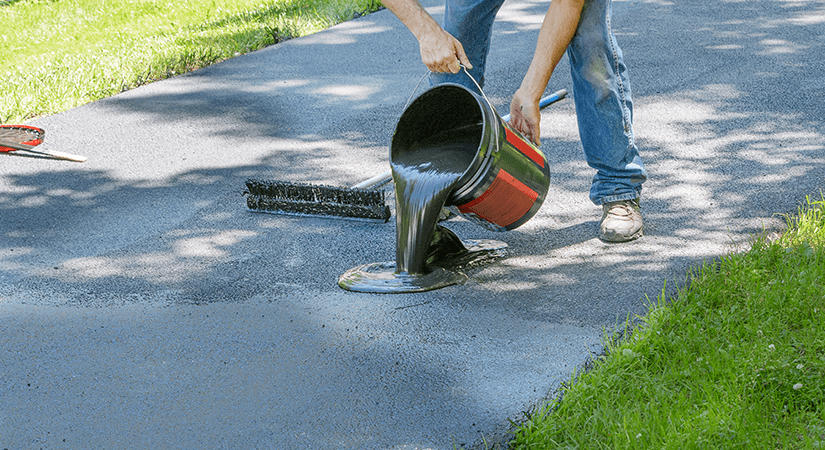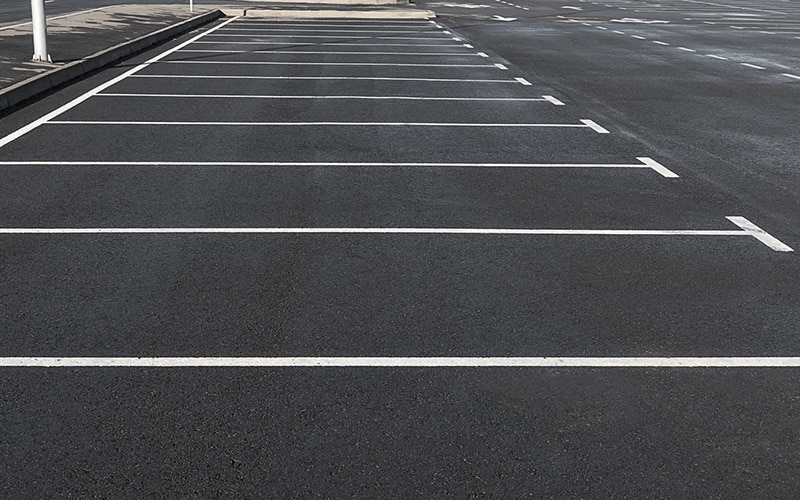Optimize Sturdiness: Hot Mix Asphalt Sealing for Angled Parking Structures
Optimize Sturdiness: Hot Mix Asphalt Sealing for Angled Parking Structures
Blog Article
Hot Mix Asphalt: A Lasting Option for Pavement
Hot Mix Asphalt (HMA) has arised as a leading lasting choice for sidewalk services, supplying a myriad of environmental benefits and cutting-edge modern technologies. As the need for green building practices expands, checking out the nuances of HMA's sustainability can give useful insights into the future of pavement remedies.
Environmental Benefits of Hot Mix Asphalt

In Addition, Warm Mix Asphalt aids to mitigate metropolitan warmth island effects. Its dark shade absorbs sunlight, minimizing the quantity of heat mirrored back right into the ambience compared to lighter-colored sidewalks. This can lower ambient temperatures in city areas, decreasing the demand for cooling and ultimately minimizing energy consumption.
On top of that, Hot Mix Asphalt adds to improved stormwater monitoring. Its permeable nature enables water to reenergize and infiltrate the pavement groundwater products, decreasing drainage and the threat of flooding. These ecological benefits make Hot Mix Asphalt a lasting choice for paving roads and highways.
Power Effectiveness in HMA Production
Is energy effectiveness a crucial consider the manufacturing of Warm Mix Asphalt (HMA)? Absolutely. Energy plays a considerable duty in the manufacturing of HMA, impacting both cost and ecological sustainability. One vital element of power performance in HMA production is the usage of warm mix asphalt (WMA) innovations (commercial parking lot paving). WMA permits for the blending and positioning of asphalt at lower temperatures contrasted to standard warm mix asphalt, leading to minimized power intake throughout production. This process not only decreases fuel use however also decreases greenhouse gas emissions, making it a more environmentally pleasant choice.
Moreover, improvements in plant technologies have actually brought about even more energy-efficient HMA manufacturing processes. Modern plants are made with features like recycled asphalt pavement (RAP) handling capacities, efficient burner systems, and enhanced insulation, all adding to power cost savings. By optimizing power usage in HMA manufacturing, the industry can lower its carbon footprint while keeping high-quality pavement products. Power performance is, as a result, an important consideration in guaranteeing the sustainability of Warm Mix Asphalt production.
Recyclability of Warm Mix Asphalt
The recyclability of Hot Mix Asphalt (HMA) is a pivotal element of its sustainability and lasting ecological effect. HMA is one of the most recycled products in the USA, with over 100 million lots of redeemed asphalt pavement (RAP) being reused every year in new pavement building and construction. Reusing HMA uses a number of ecological advantages, such as minimizing the requirement for virgin products, reducing power intake throughout production, and reducing the amount of waste sent to garbage dumps.
The procedure of reusing HMA entails grating the existing pavement, squashing it right into smaller items, and blending it with new aggregate and asphalt binder to develop a recycled mix. This recycled mix can often carry out in addition to and even better than traditional HMA, while calling for less basic materials and producing reduced greenhouse gas emissions. By including RAP into brand-new pavement projects, sites road companies can conserve natural deposits, decrease expenses, and decrease the ecological impact of road construction and maintenance activities. In general, the recyclability of HMA plays a significant duty in promoting sustainable methods within the sidewalk sector.

Long-Term Performance of HMA
Asphalt pavements show sturdiness and strength over an extensive duration, mirroring the lasting efficiency of Warm Mix Asphalt (HMA) The longevity of HMA can be credited to its ability to hold up against rush hour loads, extreme climate condition, and the impacts of aging. Research studies have shown that properly designed and correctly created HMA pavements can last for two decades or even more with routine upkeep. The trick to making best use of the long-lasting efficiency of HMA exists in utilizing premium materials, complying with ideal practices in building, and executing effective maintenance approaches. Correct water drainage, regular inspections, and prompt repair services are necessary for protecting the architectural integrity of HMA sidewalks gradually. Additionally, improvements in HMA modern technology, such as the usage of polymer-modified binders and cozy mix asphalt, have better boosted the resilience and durability of HMA pavements. By prioritizing quality building and construction and maintenance techniques, HMA remains to show itself as a cost-effective and lasting service for durable pavement facilities.

HMA: Longevity and Sustainability
Showing both sturdiness and sustainability, Warm Mix Asphalt (HMA) has become a keystone in the construction of resilient pavement infrastructures - commercial parking lot paving. HMA's toughness stems from its capacity to endure hefty lots, rough climate condition, and high web traffic quantities, making it a reputable selection for highways, freeways, and airport terminal paths. The structure of HMA, which generally includes aggregates, binder, and filler, plays a vital duty in improving its long life and resistance to tear and use
In addition, HMA's sustainability hinges on its recyclability and energy-efficient production process. The capacity to recycle reclaimed asphalt pavement (RAP) in new HMA mixtures reduces the need for virgin materials and reduces the ecological influence of pavement construction and maintenance. In addition, the power efficiency of creating HMA hinges on its reduced blending temperature levels compared to various other sidewalk products, bring about reduced energy usage and greenhouse gas discharges.
Conclusion
In verdict, hot mix asphalt (HMA) provides a sustainable solution for sidewalk with its ecologically friendly features. HMA's recyclability, power performance in production, and long-term durability make it an eco-friendly option for road building and construction.
HMA is one of the most recycled products in the United States, with over 100 million heaps of recovered asphalt sidewalk (RAP) being recycled yearly in brand-new pavement building and construction.The process of reusing HMA involves crushing the existing sidewalk, squashing it right into smaller sized items, and mixing it with brand-new aggregate and asphalt read this article binder to create a recycled mix.Asphalt sidewalks demonstrate resilience and resilience over an extended period, showing the lasting performance of Warm Mix Asphalt (HMA) In addition, improvements in HMA technology, such as the usage of polymer-modified binders and cozy mix asphalt, have better enhanced the longevity and durability of HMA sidewalks. The ability to reuse reclaimed linked here asphalt pavement (RAP) in brand-new HMA mixtures minimizes the need for virgin materials and minimizes the environmental effect of sidewalk construction and upkeep.
Report this page